Based on the results of the landmark LEAP study, medical guidelines recommend introducing your baby to peanut. But is it safe to feed baby peanut butter? Today, we’ll break down the answer for families, based on AAAAI and NIAID guidelines.
Based on the results of the landmark clinical LEAP study, several sets of medical guidelines recommend introducing your baby to peanut early and often. The American Academy of Allergy, Asthma, and Immunology (AAAAI) recommends that all babies be introduced to peanut as early as 4-6 months of age, whether they have a family history of food allergies or not.
But is it safe to introduce your baby to peanut butter? Today, we’ll break down the answer for families, including what AAAAI and NIAID guidelines have to say.
The LEAP Study: Shaping the clinical guidelines
The groundbreaking Learning Early About Peanut Allergy (LEAP) study’s results have shown that introducing babies to peanut early and often is recommended for a healthier future.
In the LEAP study, children 4-11 months of age at high risk for peanut allergy were randomly assigned to either eat peanut products regularly or avoid peanut completely until they reached 5 years of age.
The children in the study who consumed peanut regularly were much less likely to develop a peanut allergy than the children who avoided peanut completely.
Learn more about the LEAP study from the New England Journal of Medicine:
2022 findings that re-examined the landmark LEAP study's results underscore how important it is to start peanut introduction early.
These findings show that:
- Starting peanut introduction at 4 months of age (and before 6 months of age) can help your child’s body be more likely to recognize peanut as just food.
- The earlier you start feeding peanut, the more likely your child will be able to freely eat peanut later in life.
- Early peanut introduction (ideally before 6 months of age) is beneficial for all babies, not just infants at higher risk of peanut allergy.
Clinical guidelines on how to introduce peanut
The LEAP study’s results have prompted several leading medical organizations to publish guidelines recommending early, sustained peanut introduction for babies.
Notably, guidelines from the American Academy of Allergy, Asthma and Immunology (AAAAI); the American College of Allergy, Asthma, and Immunology (ACAAI); and the CSACI (Canadian Society of Allergy and Clinical Immunology) recommend early peanut introduction for all babies, regardless of their risk for peanut allergy.
The AAAAI guidelines state that “peanut… should be introduced around 6 months of life, but not before 4 months” to give babies the best chance at safely eating peanut in the future.
The AAAAI guidelines recommend feeding babies 2 grams of peanut protein at least three times per week, starting as early as 4-6 months of age. These amounts are based directly on the amounts of peanut given in the landmark LEAP study.
But should you introduce baby to peanut butter to follow the AAAAI recommendations?
Should I give my baby peanut butter?
Is it safe to give your baby peanut butter? By itself, no.
It is not safe to give your baby peanut butter on its own, as it is a choking hazard for babies and toddlers. In fact, you shouldn’t give any child lumps of peanut butter by itself, or peanut butter on a spoon, until they’re at least 4 years old.
As the AAAAI affirms in their peanut introduction guidelines, “Whole-peanut kernels and chunks of peanut butter are potential choking hazards and should not be given to children younger than 4 years.”
The National Institute of Allergy and Infectious Diseases (NIAID) makes a similar statement in their own peanut introduction guidelines: “Peanut butter directly from a spoon or in lumps/dollops should not be given to children less than 4 years of age.”
“Peanut butter...should not be given to children less than 4 years of age.” - NIAID
Chunky peanut butter’s choking hazards are obvious, as it includes hard pieces of peanut. But even smooth peanut butter by itself can pose a choking hazard to babies and toddlers.
The only safe way to introduce peanut butter to babies
The only safe way to give your baby peanut butter is when you water down (dilute) smooth peanut butter to thin it.
The AAAAI counts “diluted peanut butter” among the infant-safe forms of peanut that they recommend for peanut introduction. And the NIAID also recommends “thinned smooth peanut butter.”
If you choose to offer thinned peanut butter to your baby:
- Only use smooth peanut butter. Never use chunky peanut butter, as it’s a choking hazard even when thinned.
- Choose a natural smooth peanut butter that contains peanut as its only ingredient. (Avoid peanut butter with added sugar, salt, or preservatives.)
- Then, dilute the peanut butter with water.
One commonly used approach to thin peanut butter is: 2 teaspoons of smooth peanut butter thinned with a few teaspoons of hot water, mixed together, then cooled before serving. The diluted peanut butter can be mixed with baby’s other foods, such as infant cereal.
Other safe forms of peanut introduction
Besides thinned peanut butter, the AAAAI also recommends other age-appropriate and safe ways to introduce babies to peanut.
In their guidelines, the AAAAI advises that “peanut-containing products, such as powders/flours and snacks (e.g., peanut puffs), have also been used as safe forms of peanut for infants.” The peanut powder or peanut flour should be mixed into other foods, such as baby’s puree.
The NIAID recommends similar forms of peanut for safe introduction: thinned smooth peanut butter, peanut powder, peanut flour, or peanut puffs.
Whichever form of peanut a family uses, baby should consume the recommended 2g peanut protein per serving, at least 3 times per week (keep in mind, this isn’t always the same as 2g of the flour, powder, or puffs).
Be sure to give the first taste of peanut when baby is healthy. If baby has a cold, fever, or other illness, wait until they're better before starting to feed peanut. You should also give that first taste of peanut either at home or at the doctor's office (not at a restaurant or at day care).
Parents or caregivers should closely monitor baby for at least 2 hours after giving baby peanut, to make sure baby doesn’t develop symptoms of an allergic reaction.
Ready. Set. Food! makes peanut introduction easy and safe
DIY approaches to introducing peanut can be time-consuming and frustrating. It can be difficult to measure out the right amount of peanut protein – and even harder to get baby to consume it.
But Ready. Set. Food! makes it easy to safely introduce peanut to your baby and follow the clinical guidelines.
Our evidence-based system helps baby get the needed exposure for a healthier future, and keeps growing with your little one.
Ready. Set. Food! Stage 1 and 2 Mix-Ins introduce peanut (plus egg and milk, the three foods responsible for over 80% of childhood food allergies) in the exact amounts used in LEAP and other landmark clinical studies. So, you can rest assured that your baby is consuming the right amount of peanut.
Just pour one of our daily pre-measured packets into baby’s bottle or food! And since it fully dissolves in breastmilk or formula, you can start Ready. Set. Food! as early as 4 months of age, even before your baby is ready for solids.
Once baby is consistently eating solid foods, you can start mixing Ready. Set. Food! Stage 3 Mix-Ins into their food, or feed them one of our yummy flavors of Organic Baby Oatmeal. These products continue the needed daily exposure to peanut, plus 8 other top allergens (egg, milk, cashew, almond, walnut, sesame, soy and wheat).
Then, once your little one is at least 8 months old and accustomed to chewing solids, you can start feeding them Ready. Set. Food! Organic Puffs, the only peanut puff snacks with 9 top allergens inside.
And after your little one is 12 months old, can stand or walk without support, and can use their back teeth to chew through a variety of foods, they can enjoy Ready. Set. Food! Organic Oat and Fruit Bars and keep eating 8 top allergens including peanut.
We've also got lots of ways baby can safely enjoy the delicious flavor of peanut butter, already mixed into our Ready. Set. Food! products:
- Peanut Butter, Peanut Butter Banana, and Daniel Tiger Peanut Butter Strawberry Organic Baby Oatmeal
- Peanut Butter Organic Puffs
- Peanut Butter Strawberry Organic Oat and Fruit Bars
Ready. Set. Food! only contains organic, non-GMO food ingredients, with no added sugar and no artificial additives. It’s recommended by over 1000 pediatricians and allergists.
Ready. Set. Food! can help you follow AAAAI and NIAID guidelines for early peanut introduction, and give your baby the best chance at food freedom.
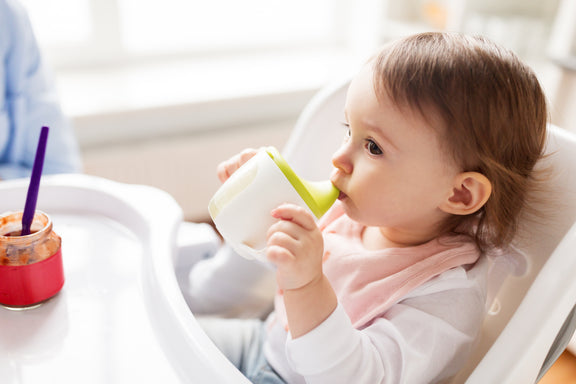
Pros And Cons Of Sippy Cups
Thinking about giving your little one a sippy cup? Today, we’ll co...
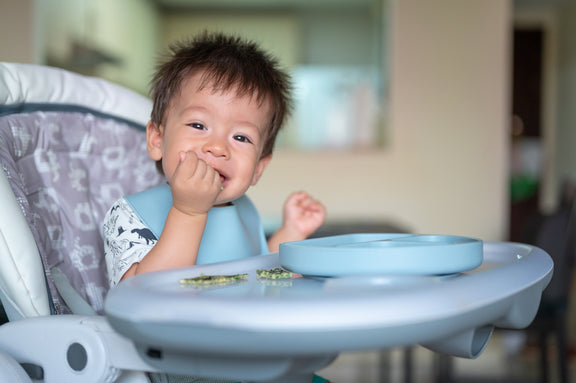
What Toddlers Eat In A Day: 12-18 Months Old
Looking for ideas of what to feed your 12-18 month old little one? ...
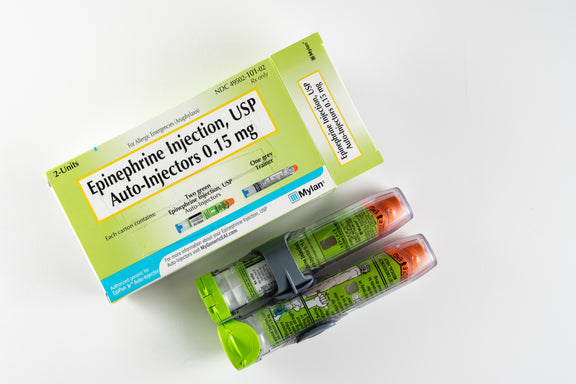
New Study Shows That Infant Anaphylaxis Usually Resolves With One Epinephrine Dose
A recent study has shown that, when infants experience severe aller...
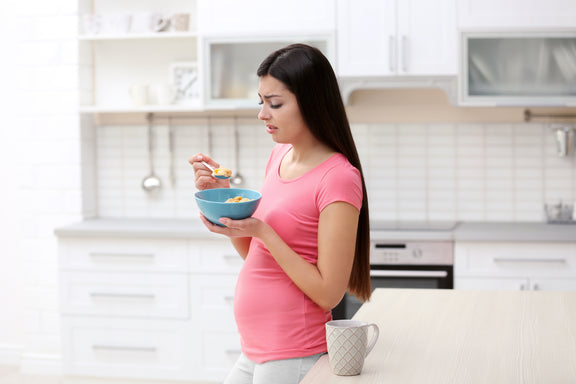
Pregnancy Nutrition: What To Eat In The First Trimester
What to eat in the first trimester that will nourish your body, pro...
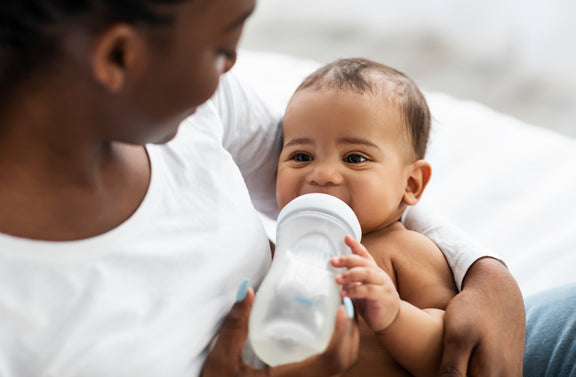
Formula Feeding Amounts: How Much Formula Should You Feed Baby Per Day?
How much formula should baby drink per day? It depends on their age...
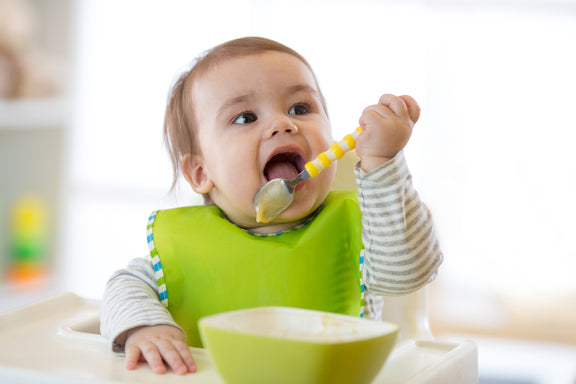
What Baby Eats In A Day: 6-12 Months Old
Looking for ideas of what to feed your 6-12 month old little one? H...
All health-related content on this website is for informational purposes only and does not create a doctor-patient relationship. Always seek the advice of your own pediatrician in connection with any questions regarding your baby’s health.
These statements have not been evaluated by the Food and Drug Administration. Products are not intended to diagnose, treat, cure or prevent any disease. If your infant has severe eczema, check with your infant’s healthcare provider before feeding foods containing ground peanuts.

